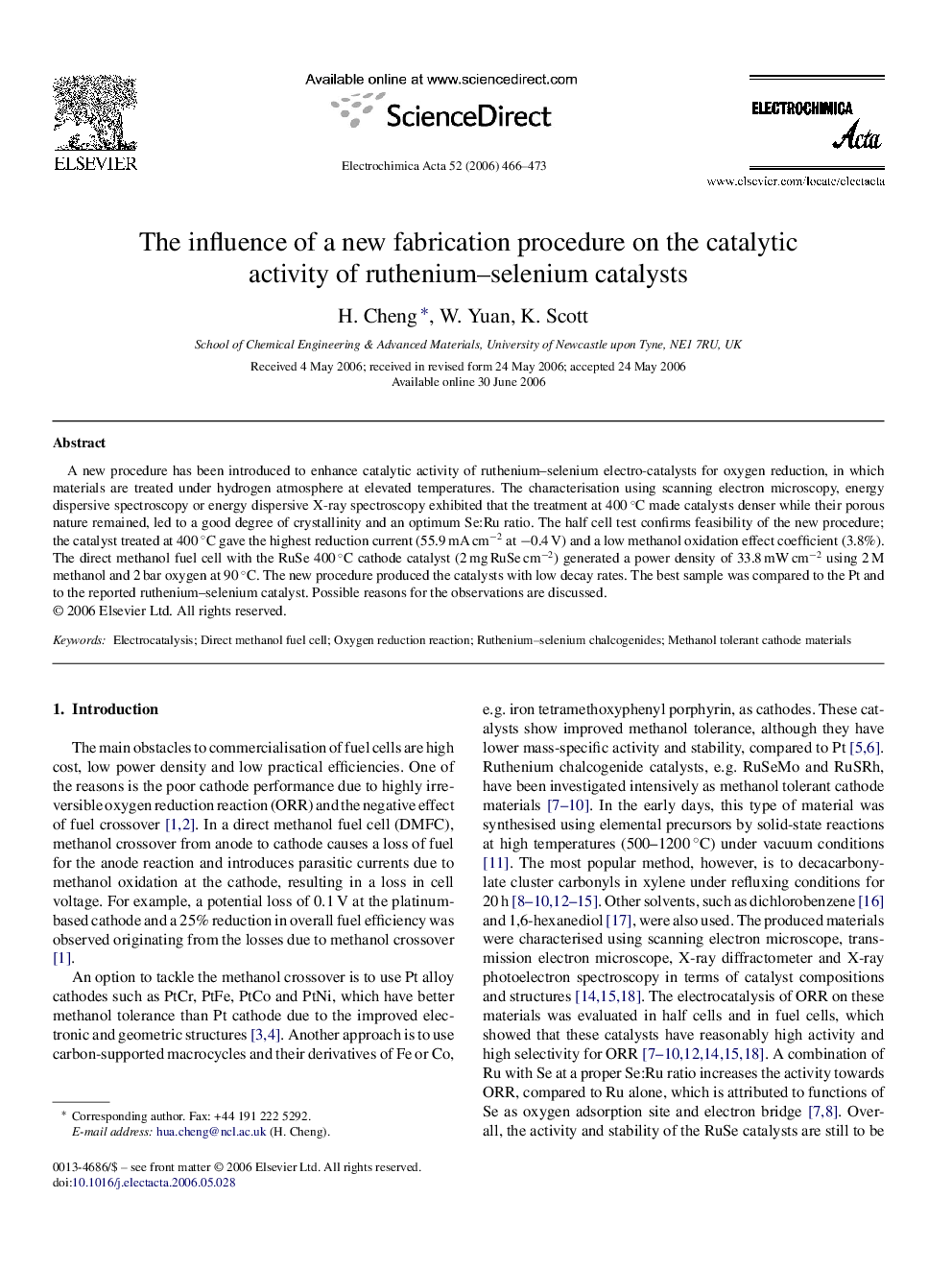| کد مقاله | کد نشریه | سال انتشار | مقاله انگلیسی | نسخه تمام متن |
|---|---|---|---|---|
| 194333 | 459789 | 2006 | 8 صفحه PDF | دانلود رایگان |

A new procedure has been introduced to enhance catalytic activity of ruthenium–selenium electro-catalysts for oxygen reduction, in which materials are treated under hydrogen atmosphere at elevated temperatures. The characterisation using scanning electron microscopy, energy dispersive spectroscopy or energy dispersive X-ray spectroscopy exhibited that the treatment at 400 °C made catalysts denser while their porous nature remained, led to a good degree of crystallinity and an optimum Se:Ru ratio. The half cell test confirms feasibility of the new procedure; the catalyst treated at 400 °C gave the highest reduction current (55.9 mA cm−2 at −0.4 V) and a low methanol oxidation effect coefficient (3.8%). The direct methanol fuel cell with the RuSe 400 °C cathode catalyst (2 mg RuSe cm−2) generated a power density of 33.8 mW cm−2 using 2 M methanol and 2 bar oxygen at 90 °C. The new procedure produced the catalysts with low decay rates. The best sample was compared to the Pt and to the reported ruthenium–selenium catalyst. Possible reasons for the observations are discussed.
Journal: Electrochimica Acta - Volume 52, Issue 2, 25 October 2006, Pages 466–473